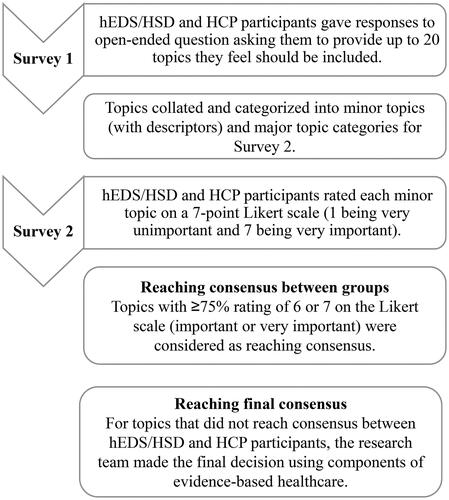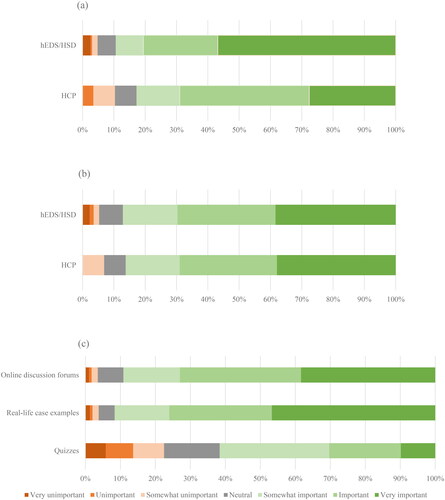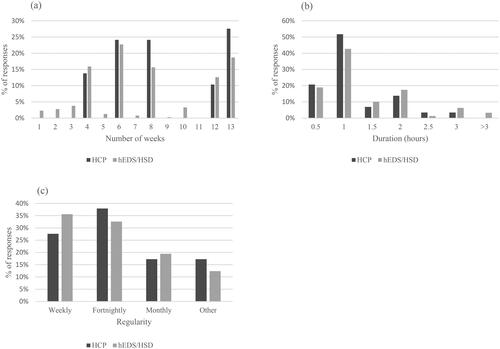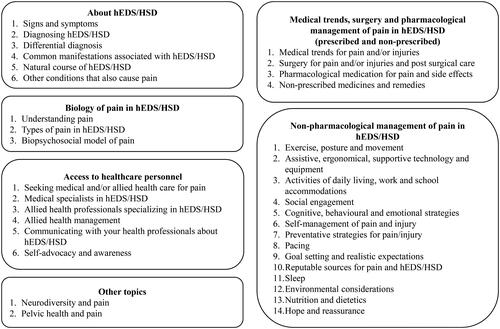Figures & data
Figure 1. Flowchart of Delphi process. HCP = Healthcare professional, hEDS = hypermobile Ehlers-Danlos Syndrome, HSD = Hypermobility Spectrum Disorder.

Figure 2. Participant response rate flowchart. HCP = Healthcare professional, hEDS = hypermobile Ehlers-Danlos Syndrome, HSD = hypermobility spectrum disorder, SD = standard deviation.

Table 1. HCP and hEDS/HSD participant demographics.
Figure 3. (a): Importance of online pain management program. HCP = Healthcare professional, hEDS = hypermobile Ehlers-Danlos Syndrome, HSD = hypermobility spectrum disorder. (b): Importance of online HCP contact as part of program. (c): Importance of other components to program.

Figure 4. (a): Duration of program. HCP = Healthcare professional, hEDS = hypermobile Ehlers-Danlos Syndrome, HSD = hypermobility spectrum disorder. (b): Time commitment per week. (c): Regularity of online HCP contact.

Figure 5. Categorised topics. hEDS = hypermobile Ehlers-Danlos Syndrome, HSD = hypermobility spectrum disorder.

Table 2. Usability participant demographics.
Supplemental Material
Download Zip (41.3 KB)Data availability statement
The authors confirm that the data supporting the findings of this study are available within the article and its supplementary materials. Raw data files related to this study can be found at: Chan, Cliffton; Chew, Min Tze; Ilhan, Emre; Nicholson, Leslie (2024). The raw data files for "An online pain management program for people with hypermobile Ehlers-Danlos syndrome or Hypermobility Spectrum Disorder: a three-staged development process". Macquarie University. Dataset. https://doi.org/10.25949/24892329.v1.
